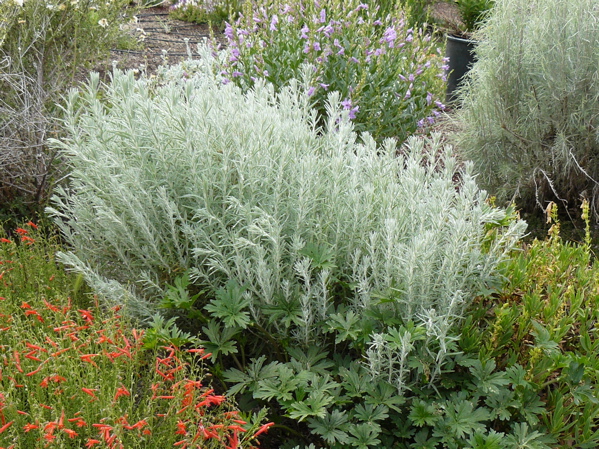Winterfat in the Landscape

Diane Jones, Draggin' Wing Farm, Water-thrifty Plants for Idaho
Scientfic Name: Krascheninnikovia lanata, Ceratoides lanataCommon Name: Winterfat, Whitesage
Description: Mid-size, compact xeric shrub with silvery leaves on wiry, candelabra-like stems. Unusual and eye-catching attractive growth form. The inconspicuous white flowers in late summer are followed by ornamental wooly white seedheads in fall, which can be used in dried arrangements. Attracts birds & tolerates alkaline soils.
Native Habitat: Hillsides, mesas, plains and foothiils throughout the Intermountain Region from 4,000-9,000.
Cultural Requirement
Soil: Well-drained, shallow, nutrient-poor or ordinary garden soil. Tolerant of alkaline soils.
Moisture Tolerance: Very drought-tolerant. More tolerant of extra water and fertility than other desert shrubs.
Sun/Shade/Preference: Full sun.
Transplanting: Transplants well from containers, not from the wild.
Propagation: Seed.
Maintenance (pruning, fertilization, deadheading, division, irrigation, etc): Prune back in spring for tidier appearance.
Insect, disease, or other problems: None of concern.
Landscape Value
Use in the Landscape: Attractive specimen plant, its unusual shape providing an interesting contrast with flowering perennials.
Foliage: Thin silvery leaves on winding stalks.
Flower: Inconspicuous.
Timing: Fall.
Fruit: White with hairy bracts
Form: This shrubby plant sprawls horizontally, sending up numerous candle-like stalks.
Texture: Branches, leaves and fruit covered in dense hair gives the plant an overall whitish appearance
Ultimate Size: 3 x 3
Rate of Growth: Moderate to rapid growth with supplemental water
Suggested Plant Partners: Cutleaf Daisy, Sulfur Buckwheat, Winecups, Princes Plume
Availability: Available at specialty nurseries
Cultivars: None
References:

